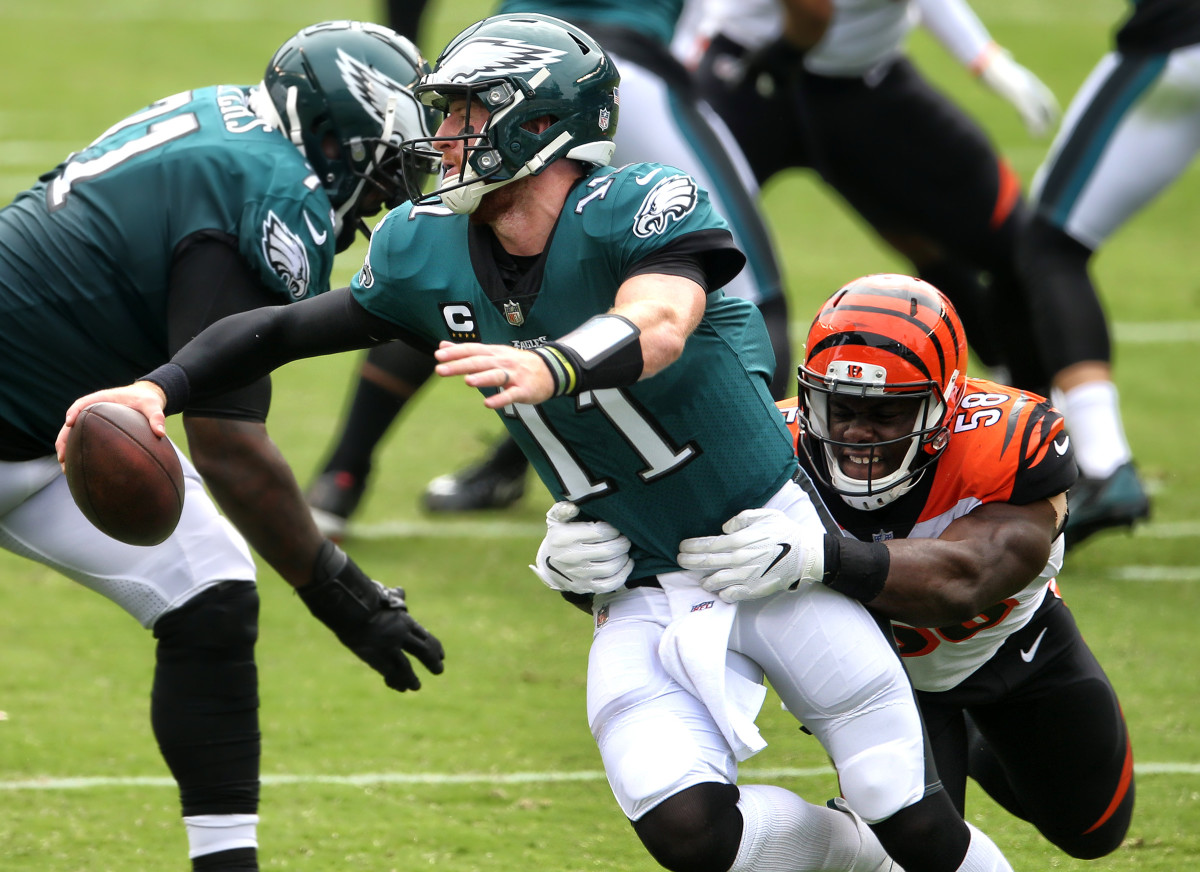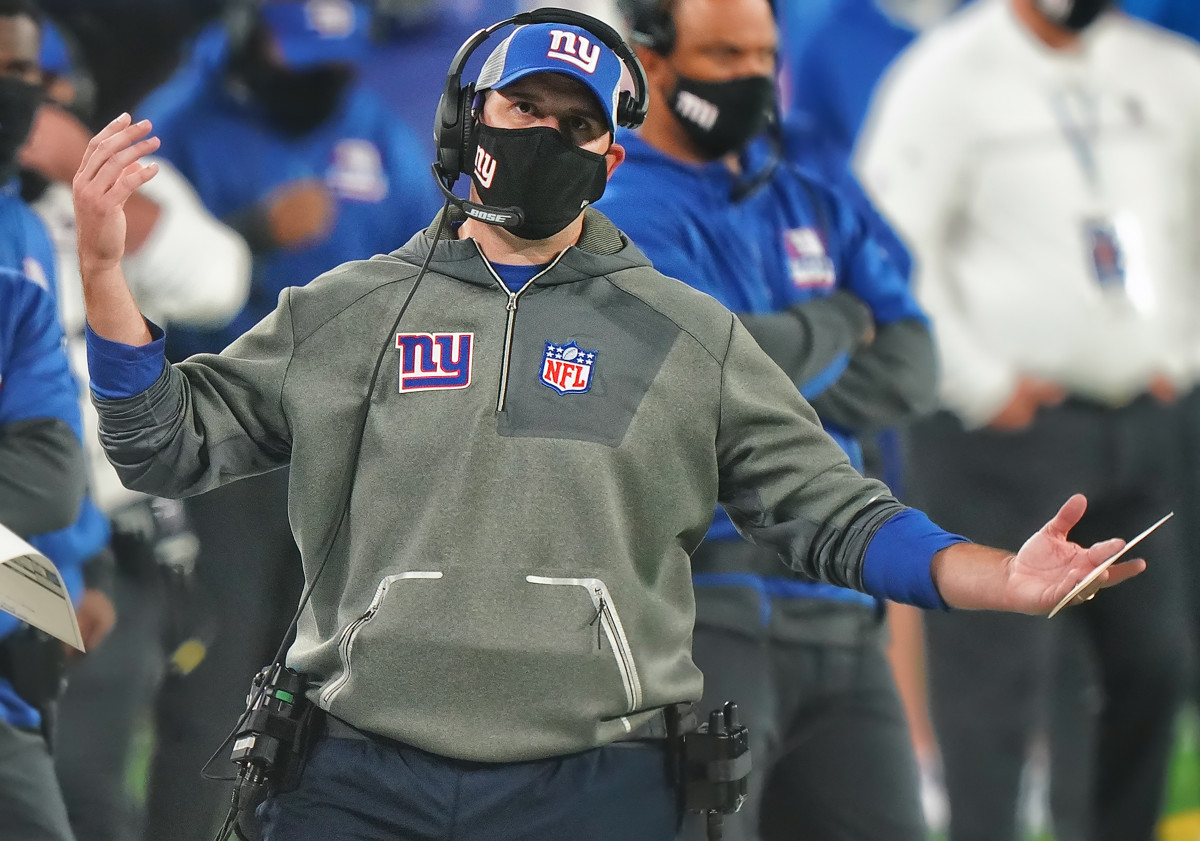The NFC East Is the Worst Division in the NFL, But Just How Bad Is it?
Over the last few days, the NFC East has inspired endless memes, Twitter jokes and hand-wringing. The settling in of that familiar resignation regarding the NFL’s most confounding division now feels like an annual event, though this year the early returns are bad enough to be almost historic. The four teams’ composite record so far this season is 3–12–1, just one tie with the Bengals away from matching the AFC Central’s 3–13 start to the 1984 season—which Pro Football Reference asserts is the worst W–L record by a division through four games apiece since the merger.
It feels like déjà vu: The Cowboys blowing games. The Eagles falling short of expectations. The Giants being unable to reverse their descent into irrelevance. At least Washington finally changed its racist name? As the NFC East stumbles to the perceived inevitably of another 9–7 division champ—or worse—we wondered, just how bad is the recent history of the NFC East? MMQB senior editor Gary Gramling immediately pointed to the infamy of the 2014 NFC South, in which every team finished under .500, with the 7–8–1 Panthers in first place. But on the whole, in our recent football-watching frames of reference, how bad has this division been, comparatively?
The answer, in short: pretty bad. (Continue reading for the longer analysis!)

The NFC East has been won by a team with a 10–6 or a 9–7 record in seven out of the last 10 seasons. That’s more than any other division, one more than the AFC South over that time. The AFC East champion never had fewer than 11 wins over that time period, and 11–5 only happened once; of course, this is because the Patriots never dipped below 11 wins. But for additional non-dynastic context: The Seahawks won the NFC West at 7–9 in 2010, but only one other time over the last 10 years was that division won by a team with 10 or fewer wins (the ‘16 Seahawks, at 10–5–1). The NFC South, other than the forgettable ’14 season, has been won by a team with 11 or more wins each other year in the past decade.
Cumulatively, the NFC East division winners had a 105–55 record during the 2010s. That’s second-worst, behind only the AFC South, whose winners totaled 103–57. The NFC East also had the fewest number of teams qualify for the playoffs as wild cards: only the ’16 Giants and ’18 Eagles. No other division produced fewer than four—that was the AFC East and AFC South—while the NFC North and AFC North yielded the most wild-card teams with seven apiece.
And top to bottom, the NFC East has fared poorly as well. Including the first four weeks of this season, its four member teams have combined for a 308–346–2 record since 2010. Again, only the AFC South has been worse, amassing a 291–364 record. In comparison, the AFC East has won 341 games over the last decade, the most of any division, followed by the NFC North (340) and the NFC West (339). The NFC East and the AFC South are also the only two divisions that finished above .500 just once in the last 10 years; every other division did so at least four times, and the AFC East and NFC North did so eight times.
We cannot forget, of course, that the NFC East has produced two champions over the last decade: the ’11 Giants and the ’17 Eagles. The AFC East leads all divisions, thanks to New England’s three rings since 2010; the AFC West also has yielded two champions, the ’15 Broncos and the ’19 Chiefs. The NFC South and the AFC South are the only two divisions not to bring home a title in the last 10 years. Only the AFC South has not even had a team play in the Super Bowl over this time period.
Overall, the worst division over the last decade has been the AFC South. Draft status is another indicator; three of its members landed the No. 1 overall pick in the 2010s. The Colts took Andrew Luck in 2012, the Texans took Jadeveon Clowney in 2014 and the Titans traded the 2017 pick to the Rams for a bounty of draft capital. The NFC East has not made a top overall selection since the Cowboys took Russell Maryland in 1991.
But you can make a strong argument that the NFC East is a close second, and its stumbles are exacerbated by other compounding factors. One is that this year’s painful start is coming on the heels of a 2019 season in which the NFC East went a combined 24–40—the third worst record of any division over the last 10 years, after only the ’14 NFC South (22–41–1) and the ’16 NFC West (23–39–2), and tied with the ’13 South. Sure, it’s only been four weeks, but odds of a rebound don’t seem promising.
We also are more bothered by the NFC East’s underachievement than, say, the AFC South’s for a couple more reasons. One is the history of the division: The four NFC East teams have combined to win 13 Super Bowls, by far the most of any of the current division groupings. (The AFC East is next, with nine titles.) It’s also the only division in which all four of its current franchises have won championships, two within the last decade. All four NFC East clubs are also in the top 10 of Forbes’s most valuable NFL franchises, again the only division for which this is true. The NFC East’s current woes stand in stark contrast to the prominence of its member franchises as well as their historic championship success. This history of success, along with the teams’ large fan bases, means the NFC East is frequently foisted upon us in prime time, regardless of how good the teams are.

The other reason is that we have thought, in recent seasons, that a couple of these teams had a chance to be good. The Eagles are only three years removed from their Super Bowl and the likely MVP campaign Carson Wentz was putting together before he tore his ACL on a December afternoon in L.A. But the injuries to the offensive line and receiving corps have impeded the functionality of Wentz and the offense—though the QB’s scrambling and big plays by unlikely heroes did help will the Eagles to their first win of the season, against a 49ers opponent also ravaged by injuries. And while the Cowboys’ 1–6 record in one-score games last season was used as an argument for the team’s predicted resurgence this year, they’ve instead already lost two one-score contests this season, are currently yielding 36.5 points per game (more than 10 full points worse than the league average), and their only win came on a basically miraculous onside kick recovery.
With all these factors put together, it’s fair to say that the NFC East is the NFL’s most disappointing division, and the only one in which it’s impossible at this point to earnestly name a real Super Bowl contender. Nevertheless, the race to reach nine or 10 wins—or, mercy, seven or eight—is always entertaining, even if for all the wrong reasons. So get ready for Week 17, because the Eagles host Washington and the Giants host the Cowboys, and someone has to qualify for the playoffs.
